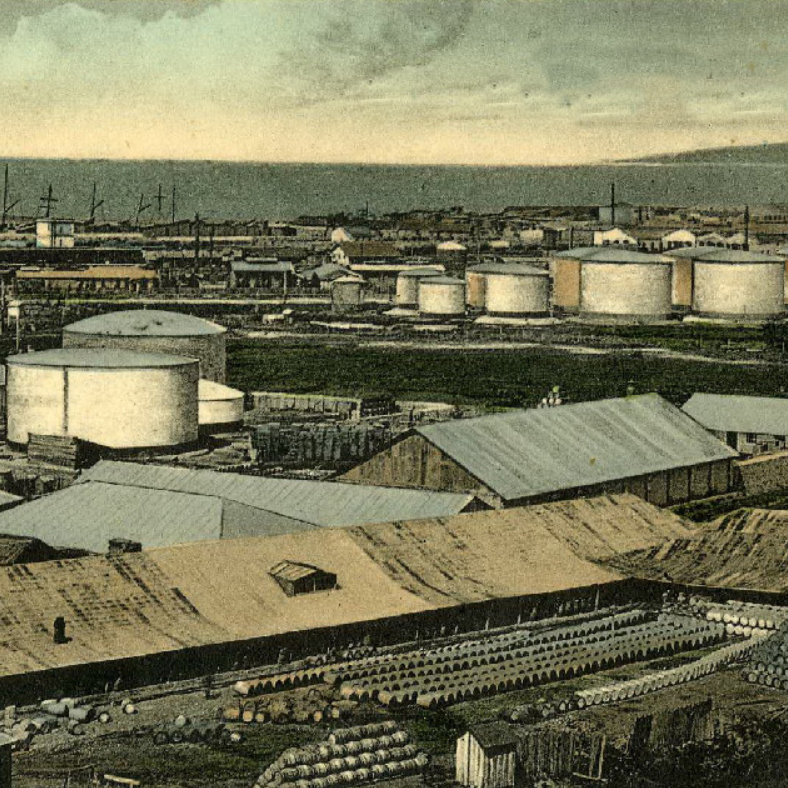ON THE INDUSTRIAL HISTORY OF GEORGIA
The peaks of the Caucasus to the north; the Black Sea to the west and the Caspian Sea nearby to the east: for thousands of years, Georgia has been at the crossroads of trade and activity from all points of the compass. Even in ancient times, travellers crossed the Caucasus by way of the Darial Gorge, a route that was later expanded into the “Georgian Military Way”. Trade caravans journeyed through Georgia along the side routes of the Silk Road, and in more recent times, oil pipelines have criss-crossed the country for over a hundred years.
Georgia’s natural resources were exploited early on. Some researchers identify the country as among the first pre-historic cultures to learn how to smelt copper. The ancient legend of the Golden Fleece recalls the history of gold mining on the Black Sea. Georgia’s Bagratid Dynasty, which briefly reigned over the country as kings, systematically expanded mining in the 18th century. The Russian Czars annexed the country to their empire at the start of the 19th century, intensified trade, imported the sought-after Georgian raw silk and began mining hard coal in Tkibuli.
Then, Europe’s insatiable thirst for energy triggered a massive rush of development. The world’s most powerful banking and industrial dynasties descended on Georgia to secure the region’s petroleum. Walter von Siemens, the brother of famous entrepreneur and inventor Werner von Siemens, built the first oil derricks in the Russian Empire to extract Georgian oil. Ludwig Nobel, brother of dynamite inventor Alfred, an oil magnate in (at that time Russian) Baku on the Caspian Sea, had the “black gold” transported to Batumi and shipped it from there to the Mediterranean. In 1883, Alfons Rothschild built a rail line from Baku to Batumi to secure the supply for his refinery on the Adriatic. In 1892, Marcus Samuel, co-founder of Royal Dutch Shell, dispatched an oil tanker from Batumi on the route to the Far East. This marked the start of planning for a pipeline between Baku and Batumi, which commenced operation in 1907. Today, a museum in Batumi documents the history of the petroleum industry.
At the same time, both the Czar of Russia and the German steel group Krupp invested in mining the rich manganese deposits in the gorge of the Kvirila River. This spawned the mining town of Chiatura. Silk production developed from an agricultural trade to an industry, supported by the Caucasian Institute for Silkworm Breeding, founded in Tbilisi in 1887. Today, a museum in the old institute building recalls Georgia’s lost silk manufacturing. A self-aware, working class developed in tandem with the industries and played an important role in pre-revolutionary Russia.
Georgia declared independence after the First World War, which left massive devastation in its wake, and the 1918 revolution;, but the Soviet Union annexed the country in 1921 and started an extensive programme of industrialization. The use of water power began in 1927 with the hydroelectric plant in Avchala, near Tbilisi; the plant on the Rioni River near the expanding industrial city of Kutaisi went into operation in 1933. In order to expand the transportation of crude oil from Baku – now part of the Soviet Socialist Republic of Azerbaijan – the government approved construction of a further pipeline to Batumi in 1930.
A steel plant was established in Sestaponi in 1933, which forged special alloys using manganese from the mines of Chiatura. Starting in 1950, the Rustavi steelworks, the largest in the Caucasus, produced seamless tubes. Of the many chemical plants there, the fertilizer manufacturer Azot is still in operation, and the international conglomerate Heidelberg Cement today operates many of the cement plants here. A plant for manufacturing military aircraft was founded in Tbilisi in 1941, and starting in 1951, KAZ trucks began coming off the line of a large plant in Kutaisi. A cooperative for silk manufacturing was also founded there, and Tbilisi saw the opening of textile plants and processors of foods such as tea, grapes and citrus fruits.
However, the transient successes of industrialisation came at the price of severe environmental damage and a fatal dependence on other Soviet republics. Consequently, Georgia, which declared independence in 1991, has suffered in particular from dramatic shortages of energy and raw materials since the collapse of the USSR.
Georgia was a union republic of the 'Union of Soviet Socialist Republics (USSR)', which was dissoluted in 1991.
Therefore, for completeness, also read our articles on the industrial history of the other former soviet republics
Armenia
Azerbaijan
Belarus
Estonia
Kazakhstan
Latvia
Lithuania
Moldova
Russia
Ukraine


